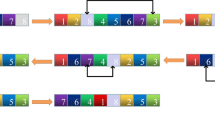Abstract
In digital rights management, there are many instances where there is more than one user involved, with each user having different level of rights. In this paper, we develop a novel approach to the multi-user, multi-right problem, where users are tied to various rights in an arbitrary access structure. Our approach is applicable to all kinds of media and can be used with any watermarking algorithm, provided that keys are used to generate the watermarks. This flexibility also enables it to benefit from future progress in the development of watermarking algorithms, in particular that of multiple watermarking. The proposed technique uses the generalized secret sharing scheme of Benaloh and Leichter, and builds on the earlier work of Guo on the joint ownership problem. By noting that the number of rights is likely much smaller than the number of users in most practical situations, and by generating the watermarks independently, the proposed approach achieves greater fidelity and detection capability than Guo’s schemes while remaining secure against colluding users.




















Similar content being viewed by others
References
Barreto PSLM, Kim HY, Rijmen V (2002) Toward secure public-key blockwise fragile authentication watermarking. In: IEE Proceedings—vision, image and signal processing, vol 149. IEEE, Piscataway, pp 57–62
Benaloh J, Leichter J (1988) Generalized secret sharing and monotone functions. In: International cryptology conference on advances in cryptology, vol 2. Springer, New York, pp 27–35
Cox IJ, Kilian J, Leighton T, Shamoon T (1996) A secure, robust, watermark for mltimedia. In: International workshop on information hiding, Cambridge, 30 May–1 June 1996, pp 185–206
Cox TL IJ, Kilian J, Shamoon T (1997) Secure spread spectrum watermarking for multimedia. IEEE Trans Image Process 6(12):1673–1687
Cox IJ, Miller ML, Bloom JA (2001) Digital watermarking. Morgan Kaufmann, San Francisco
Gui G, Jiang L, He C (2006a) A new watermarking system for joint ownership verification. In: International symposium on circuits and systems. IEEE, Piscataway, pp 5756–5759
Gui G, Jiang L, He C (2006b) Watermarking for joint ownership verification of digital images. J Electron Imaging 15(1):013010
Guo H, Georganas N (2002) Digital image watermarking for joint ownership. In: ACM multimedia. ACM, New York, pp 362–371
Guo H, Georganas N (2003) Digital image watermarking for joint ownership verification without a trusted dealer. In: International conference on multimedia and expo. IEEE, Piscataway, pp 497–500
Guo H, Georganas N (2003) A novel approach to digital image watermarking based on a generalized secret sharing scheme. ACM Multimed Syst J 9(3):249–260
Ito M , Saito A, Nishizeki T (1987) Secret sharing scheme realizing general access structure. In: IEEE global telecommunications conference. IEEE, Piscataway, pp 99–102
Jackson WA, Martin KM, O’Keefe CM (1995) Efficient secret sharing without a mutually trusted authority. In: International conference on the theory and application of cryptographic techniques, Saint-Malo, 21–25 May 1995, pp 183–193
Jackson WA, Martin KM, O’Keefe CM (1997) Mutually trusted authority-free secret sharing schemes. J Cryptol 10:261–289
Li C (2004) Digital fragile watermarking scheme for authentication of jpeg images. In: IEE proceedings - vision, image and signal processing, vol 151. IEEE, Piscataway, pp 460–466
Li Q, Chang E-C (2004) Public watermark detection using multiple proxies and secret sharing. In: International workshop on digital watermarking, vol 2939, Seoul, 30 October–1 November 2004, pp 558–569
Mintzer F, Braudaway G (1999) If one watermark is good, are more better. In: IEEE international conference on acoustics, speech and signal processing. IEEE, Piscataway, pp 2067–2069
Naor N, Shamir A (1995) Visual cryptography. In: Advances in cryptology: Eurocrypt’94. Springer, New York, pp 1–12
Raval M, Priti P (2003) Discrete wavelet transform based multiple watermarking scheme. In: Conference on convergent technologies for Asia-Pacific region, vol 3. IEEE, Piscataway, pp 935–938
Shamir A (1979) How to share a secret. Commun ACM 22:612–613
Sheppard NP, Safavi-Naini R, Ogunbona P (2001) On multiple watermarking. In: Workshop on multimedia and security at ACM multimedia. ACM, New York, pp 3–6
Wang Y, Doherty JF, Van Dyck RE (2002) A wavelet-based watermarking algorithm for ownership verificationof digital images. IEEE Trans Image Process 11(2):77–88
Wu Y (2003) Dynamic ownership verification. In: International conference on information, communications and signal processing, Pacific-Rim conference on multimedia. IEEE, Piscataway, pp 985–988
Zhang YQ, Emmanuel S (2005) A novel watermarking framework for joint-creatorship protection. In: International conference on cyberworlds. IEEE Computer Society, Los Alamitos, pp 109–116
Zhang L, Zhou P-p, Qian G-b, Ji Z (2007) A dwt blind image watermarking strategy with secret sharing. In: Pacific Rim conference on multimedia 2007. Springer, New York, pp 377–384
Zheng D, Zhao J, El Saddik A (2003) RST invariant digital image watermarking based on log-polar mapping and phase correlation. IEEE Trans Circuits Syst Video Technol 13:753–765
Author information
Authors and Affiliations
Corresponding author
Rights and permissions
About this article
Cite this article
Poon, H.T., Miri, A. & Zhao, J. An improved watermarking technique for multi-user, multi-right environments. Multimed Tools Appl 42, 161–181 (2009). https://doi.org/10.1007/s11042-008-0232-1
Published:
Issue Date:
DOI: https://doi.org/10.1007/s11042-008-0232-1




